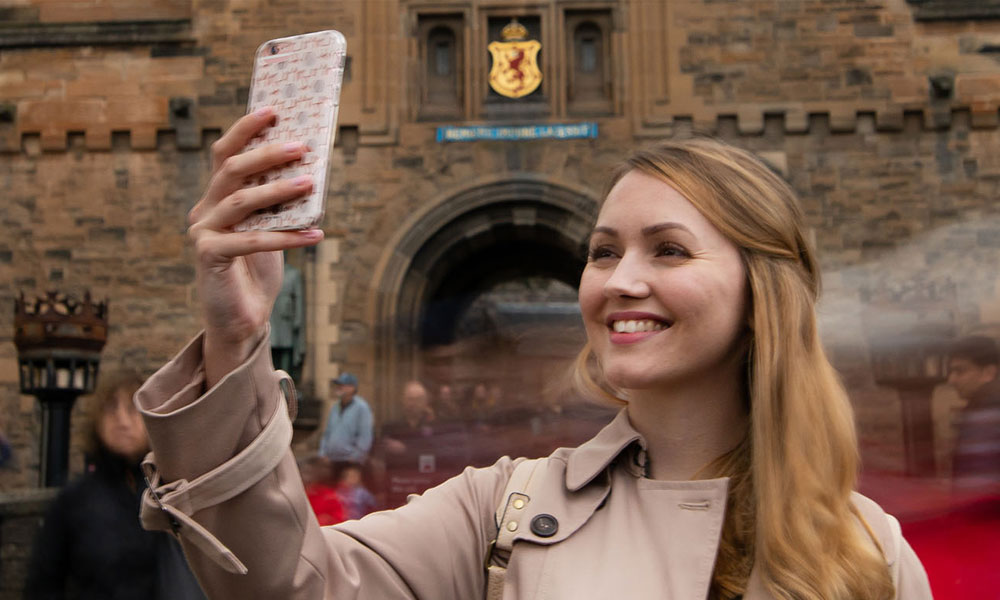Proud Mary

29 October 2018
You may remember our blog a wee while back about the works in the Mary Room. Well, as promised, here are our top 10 stories about Mary Queen of Scots and her famous family.
The background
When Mary Queen of Scots gave birth to her son and successor in Edinburgh Castle in 1566, her royal line was secured. James not only gained the throne of Scotland but also England and Mary’s descendants would rule for another 150 years.
You can look that Stuart dynasty in the eye through a selection of portraits that now hangs in the Mary Room – once the queen’s bedchamber – of the royal palace at the castle. The line of succession has been painted directly onto the walls between each painting to reveal the royal connections down the generations to Charles Edward Stuart, of Bonnie Prince Charlie – Mary’s great great great grandson.
The story of Mary’s royal line and its intimate connections to the castle is dramatic and compelling. If walks could speak imagine the stories they would tell.
Here are our top 10 more colourful episodes that can be seen in the new interpretation within the Mary Room:
1. An unhappy beginning
Mary Queen of Scots married François, heir to the French throne, when she was 15. The castle guns, including Mons Meg, were fired to mark the marriage. But the couple’s portraits show them in mourning dress for the French king, Henri II. The king had died after being struck in the eye by a splinter from a shattered lance while jousting in 1559.
2. A private affair
Mary Queen of Scots sought the prestige and security of the castle for the birth of her son and heir. The tiny birth room was kept dark, warm and quiet and only the queen, a midwife and some female attendants were allowed inside. Mary clutched a holy relic of St Margaret for divine protection. Her baby, the future James VI, was born on the morning of 19 June, 1566.
3. A handsome chap
The portrait of James VI painted by Adrian Vanson in 1585 was probably part of marriage negotiations between the king and the Danish royal family. It gave Princess Anne a first glimpse of her royal suitor. She was reportedly impressed and the couple married in 1589.
4. Mary’s final resting place
James had the remains of his mother, Mary Queen of Scots, reburied in Westminster Abbey, London. A cast of Mary’s bust from the magnificent marble tomb stands in the Mary Room in the castle’s royal palace today.
5. Changing rooms…
The castle’s Royal Palace was transformed for James’s visit to his birthplace in 1617. The top floor was remodelled for his wife Anne. But ill health prevented the queen from joining her husband. Instead, the suite of rooms was given to the king’s favourite George Villiers, Earl (late Duke) of Buckingham, who some scholars believe to have been James’s lover.
6. The last royal sleepover
James VI and I’s son Charles I spent the night in the castle’s royal palace the night before his Scottish coronation. This was the last time royalty stayed here. He hosted a banquet in the Great Hall and the following day led an extravagant procession from the castle to Holyrood Abbey, where he was formally crowned.
7. A matter of life and death
Charles I’s enemies met in the castle to discuss the king’s fate after he was defeated in a bloody civil war. The victorious English leader Oliver Cromwell was guest of honour at a banquet hosted by Archibald Campbell, head of the Scottish government in 1648. Four months later, however, their alliance ended with the execution of Charles, which horrified Scotland’s rulers.
8. Down but not out
Oliver Cromwell returned to the castle at the head of a besieging army in order to stamp out a royalist revival. The castle surrendered on Christmas Eve, 1650. But the Scots had evacuated the Crown Jewels before the siege. They were used at the coronation of Charles II in Scone on New Year’s Day, 1651.
9. An explosive celebration
The cannon Mons Meg burst in 1681 while firing a salute for James, Duke of Albany, Charles II’s brother and heir and the future King James VII and II. He was deposed after three years on the throne. In 1689, his supporters, the Jacobites, held the castle against a besieging army loyal to the new joint monarchs Mary II (James’s daughter) and her husband William II and III. Before the castle surrendered, the palace was hit by mortar bombs.
10. The end of the line
When Queen Anne died in 1714 with no surviving children, the Stuart dynasty’s grip on the throne died with her. She was succeeded by her German second cousin, the Hanoverian king, George I. The following year, James Francis Edward Stuart, the exiled son of the deposed king James VII and II tried to seize power back from George in the Jacobite Rising of 1715, known to Gaelic-speaking supporters as the Bliadhna Sheumais – the Year of James. An attack on the government-held castle failed and the rising collapsed soon after.
Don’t forget to visit the Mary Room within the Royal Palace and follow the family tree on your next visit and share your pictures with us #edinburghcastle.





